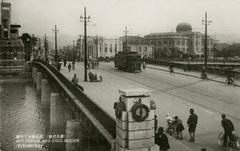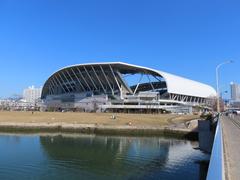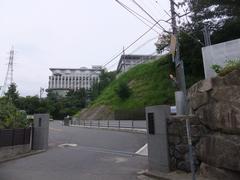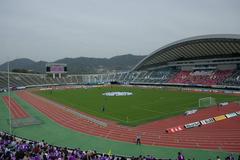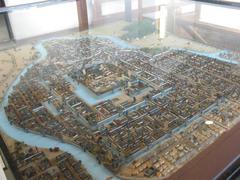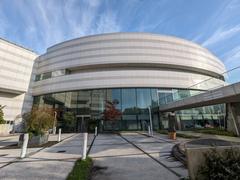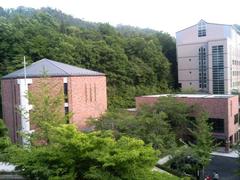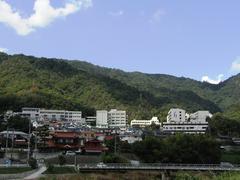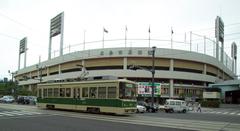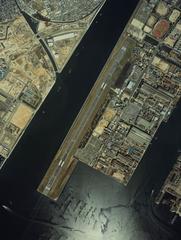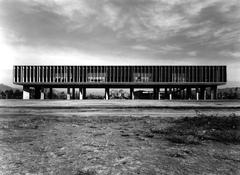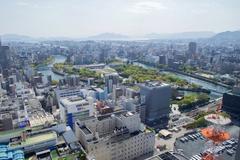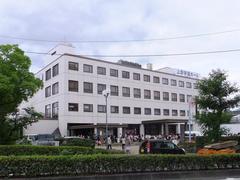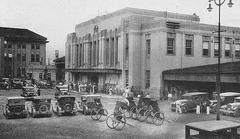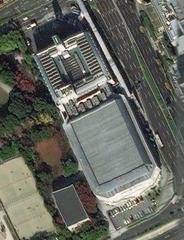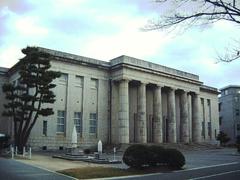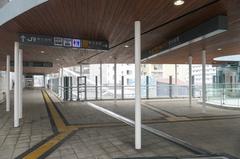
Hiroshima Unfiltered: Your Insider’s Adventure Through the City of Peace and Surprises
When to Dive In: 04/07/2025
Hiroshima: Beyond the Surface
When most people hear “Hiroshima,” they think of a single moment in history. But this city pulses with life, color, and stories that go far beyond its somber past. Picture the crack of a baseball bat at Mazda Stadium, the swirl of samurai legends, streetcars that survived the atomic blast, and the scent of okonomiyaki sizzling on a griddle. Hiroshima is a city of resilience and reinvention, where cherry blossoms drift past neon karaoke bars, and every bite of local cuisine is layered with centuries of history.
Forget the textbook version: Hiroshima isn’t just a solemn memorial—it’s a living city, proud of its scars and its hope. Locals greet you with warmth, wild boars roam the suburbs, cicadas sing in Shukkeien Garden, and chants for the Hiroshima Carp echo through the streets. Whether you’re folding a wishful crane at Peace Memorial Park or joining grandmas for dawn radio taiso in Hijiyama Park, Hiroshima invites you to choose your own adventure (city.hiroshima.lg.jp).
Ready to dive in? This guide is your bento box sampler: packed with stories, local lingo, and mini-missions to help you truly experience Hiroshima. Whether you’re a history buff, foodie, or festival-chaser, Hiroshima will greet you with a bow, a smile, and perhaps an origami crane—or two hundred. The city is ready to surprise you at every turn (japan-travel-note.com).
Your Hiroshima Adventure Map
Explore Hiroshima’s many layers:
Hiroshima: City of Carp, Courage, and Comebacks
Stand on a bridge at sunrise, mist curling off the Ōta River, golden light glinting off Hiroshima Castle’s stones, and you’ll sense the pulse of a city that wears its history like shimmering koi scales. Hiroshima is less a relic and more a living phoenix—though locals might say carp, their mascot of perseverance.
From Stone Age Sushi to Samurai Street Cred
Hiroshima’s story reaches back to ancient settlers; relics from the Jomon and Yayoi periods tell of a people who may have pioneered sushi (city.hiroshima.lg.jp). In 1589, Mōri Terumoto built Hiroshima Castle—“Carp Castle”—turning a fishing hamlet into a samurai hub. The castle’s moat, filled with koi, is said to bring luck if you spot a golden one. (Mini-quest: Count the koi and keep your eyes peeled for the legendary ghostly white carp during festivals!)
Edo Vibes, Secret Sweets, and Castle Gossip
During the Edo Period, Hiroshima blossomed under the Asano clan. Tea ceremonies, bustling markets, and the aroma of momiji manju (maple-leaf cakes) filled the air. For a taste of tradition, duck behind Shukkeien Garden to find a century-old manju shop—order the matcha flavor for a sweet surprise.
Hiroshima Castle’s nickname, “Rijō,” is said to come from a lord’s dream of a carp leaping into the sky. Whether myth or clever marketing, the story lives on among locals.
Modern Makeovers & Military Mysteries
In the Meiji era, Hiroshima Castle became an army headquarters. By the First Sino-Japanese War, the Imperial command was strategizing within its walls (japan-travel-note.com). Hiroshima’s military roots explain its abundance of curry shops—a remnant of feeding hungry soldiers. Try a spicy curry at a classic kissaten (café) for a taste of history.
The Phoenix Moment—August 6, 1945 & Beyond
At 8:15 a.m. on August 6, 1945, Hiroshima changed forever. The atomic bombing devastated the city, but Hiroshima chose renewal over ruin. Today, Peace Memorial Park is alive with schoolchildren, cicadas, and hope. Fold a paper crane at the monument—locals believe wishes made here have special power.
Myth-Buster: Is Hiroshima only about tragedy?
Absolutely not! The city honors peace, but also celebrates survival, resilience, and community. The Hiroshima Carp baseball team is a city obsession, and cheering at Mazda Stadium is a rite of passage.
Hidden Gems & Seasonal Surprises
- Sakura in Shukkeien: In April, the garden is a cherry blossom haven. Rent a rowboat for a private hanami.
- Winter Oyster Crawl: Hiroshima’s oysters are legendary—join the January festival at Ujina Wharf for fresh flavors and local sake.
- Summer Fireworks at Moto-Ujina Park: Bring a picnic and a yukata to enjoy the dazzling (and free) fireworks show.
Pop Culture Cameos
Hiroshima features in Studio Ghibli’s “Grave of the Fireflies” and inspired Pokémon’s Magikarp. Literary buffs can hunt for Kenzaburō Ōe’s “Hiroshima Notes” in local bookstores.
Local Lingo 101
- Otsukaresama! – “Good job!” or “Cheers!”
- Jaken! – Hiroshima dialect for “Because!”
- Carp-u! – Shout it at a baseball game for instant camaraderie.
Etiquette Tips
- Bow gently when greeting, especially elders.
- Don’t point chopsticks at people.
- Purify hands at shrine entrances.
- Try okonomiyaki with cabbage and noodles—and be bold, add oysters!
Sample Itineraries
- 1 Hour: A-Bomb Dome selfie, Peace Memorial Museum, and a peace crane charm.
- Half Day: Hiroshima Castle, Shukkeien Garden, and a chat with a volunteer guide.
- Full Day: Ferry to Miyajima Island, floating torii gates, wild deer, and sunset city views.
Hiroshima FAQ
- Is Hiroshima safe for solo travelers? Yes! Just watch for the occasional rogue bicycle.
- Best time to visit? Spring and autumn for magic; summer is lively, winter is for oysters.
- Japanese required? Not at all. A smile and “arigatou” go far.
- Must-try dish? Okonomiyaki—never call it a pancake!
Quick Facts
- Hiroshima’s streetcars have operated since 1912—take a ride for a retro city tour.
- The Peace Bell is open to all—ring it and make a wish.
- Carp streamers fly over the city in May for Children’s Day.
Hiroshima: Where Phoenixes Walk—A Playful Guide to the City of Hope
Did you know? The first flower to bloom after the bomb was the oleander—now Hiroshima’s symbol of resilience. This city is all about rebirth, laughter, and quirky charm. Ready to follow the phoenix trail? Here’s how to unlock Hiroshima’s essential experiences, with local secrets and playful challenges along the way.
The Phoenix Trail: Essential Experiences
-
Peace Memorial Park:
Hear the Bell of Peace, spot origami cranes, and reflect at the Atomic Bomb Dome. Visit at dawn for quiet reflection and a rare crowd-free view. -
Peace Memorial Museum:
Artifacts and survivor testimonies bring history to life. Leave your own message of peace in the digital guestbook and recharge with a Hiroshima Lemon soda at Aogiri Café. -
Miyajima (Itsukushima Shrine):
Ferry to an island where sacred deer roam and the torii gate floats at high tide. Try momiji manju, and say “Ittekimasu, shika-san!” (“See you soon, Mr. Deer!”). -
Hiroshima Castle:
Rebuilt postwar, this “Castle of Carp” offers samurai armor for dress-up photos. Visit in spring for cherry blossom showers and seek out the Inari shrine for a lucky fox charm. -
Shukkeien Garden:
A miniature landscape garden bursting with seasonal color. Find the turtle-shaped stone lantern and listen to the natural orchestra of crickets and koi splashes. -
Hiroshima’s Art Beat:
The Hiroshima Museum of Art and the City Museum of Contemporary Art both house impressive collections and offer peaceful spaces for art lovers. -
Temples, Shrines & Spiritual Hideaways:
Gokoku Shrine, Fudoin Temple, and tranquil spots like Kokozenji offer spiritual solace and a taste of local customs. -
Green Spaces & Secret Parks:
Hijiyama Park is perfect for cherry blossoms and city views. Early mornings feature radio taiso with friendly locals. -
Day-Tripper’s Delight:
Onomichi’s bike trails and indie bookstores, Iwakuni’s iconic bridge and snake shrine, and Sandankyo Gorge’s autumn colors are all within easy reach.
Hiroshima Eats: Culinary Scavenger Hunt
- Okonomiyaki: Layered, savory, and show-stopping—watch chefs at Okonomimura work their magic.
- Oysters: Enjoy them raw, grilled, or deep-fried from local stalls and festivals.
- Sweets: Setouchi lemons and wagashi are seasonal treats not to miss.
Etiquette: Slurping noodles is polite; use the oshibori (wet towel), not your sleeve.
Hiroshima Through the Seasons
- Spring: Cherry blossom picnics and hanami parties.
- Summer: Festivals, fireflies, and goldfish-scooping stalls.
- Autumn: Crimson leaves in gardens and gorges.
- Winter: Oyster feasts and lantern-lit peace ceremonies.
Local Lingo: Speak Like a Pro
- Jaken (じゃけん): “Because” (end of sentence).
- Buchō umai! (ぶちうまい!): “Super tasty!” (at food stalls).
- Dekiru kana? (できるかな?): “Can we do it?”
Hiroshima FAQ
- Is Hiroshima safe? Extremely friendly and welcoming.
- Miyajima with JR Pass? Yes—train and ferry included.
- Cherry blossoms? Late March to early April.
- How long to stay? Two to four days for highlights and hidden gems.
Myth-Busting: Hiroshima Surprises
- Myth: Hiroshima is somber and only about tragedy.
- Truth: The city bursts with festivals, art, and laughter.
- Myth: Okonomiyaki is just a pancake.
- Truth: It’s a layered, savory spectacle—half the fun is watching it cooked.
Final Word: Become Part of Hiroshima’s Story
To truly unlock Hiroshima’s magic—those hidden alleys, whispered stories, and secret local haunts—download Audiala. Our app is your local friend, guiding you with audio tours, scavenger hunts, lingo lessons, and insider tips.
Ready to rise with Hiroshima? Your adventure is just a tap away. Jaken!
Hiroshima: A Bento Box of Culture, Surprises, and Local Secrets
Hiroshima is a bento box—layered with history, flavor, and a dash of mischief. Beyond the memorials, this city is packed with laughter, kimono-swishing locals, and surprises on every corner.
The Tea Ceremony: Zen With a Side of Birdsong
Join a tea ceremony in Shukkeien Garden, surrounded by cicada song and the scent of fresh matcha. For tranquility, try calligraphy at Mitaki-dera Temple—no experience needed, just a willingness to find your inner calm.
Dress the Part: Kimono, Yukata, and the Art of Side-Eye
Slip into kimono or yukata and stroll the alleys of Hondori or Miyajima for a full-immersion experience. Ask for the “Hiroshima Musubi” obi knot for extra luck and compliments.
Hands-On Crafting: Lacquer, Firewood, and the Showa Spirit
Paint your own lacquerware coaster or split logs in a Showa-era workshop. If your piece gets a “lucky lacquer drip,” prosperity may be on the way!
Culinary Quests: Okonomiyaki Olympics & Oysters Galore
Okonomimura is the epicenter for okonomiyaki—three floors of sizzling action. For seafood lovers, Miyajima’s grilled oysters are a must. Don’t leave without tasting a momiji manju (maple-leaf cake).
Sake, Baseball, and After-Dark Adventures
Saijo’s brewery quarter offers sake tastings and festivals. Baseball fans won’t want to miss the Hiroshima Carp games—where inflatable carp and team chants create an electric atmosphere.
Local Life: Rhythm, Rituals, and Random Acts of Awesome
Hiroshima locals blend toughness and gentleness—tending shrines, folding peace cranes, and welcoming travelers with genuine warmth. Urban legends speak of wild boar sightings in the suburbs—spot one and you’re in for good luck!
Etiquette: Playful Tips
- Bow at a 30-degree angle for greetings.
- Remove shoes on tatami mats.
- Keep public voices soft.
- Ask before taking photos at shrines or of people in kimono.
Festivals: Four Seasons of Fabulous
- Spring: Flower Festival in May—colorful parades and music.
- Summer: Peace Memorial Ceremony with lanterns on the Motoyasu River and Miyajima’s Kangen-sai Festival.
- Autumn: Maple leaves in Momijidani Park.
- Winter: “Kaki-gori” (shaved ice) and festive city lights.
Nature and Outdoors: From Sea Spray to Mountain Mist
Cycle the Shimanami Kaido, hike from Miyahama Onsen, or try “shower climbing” in local rivers for adventure. The city’s natural beauty is always close at hand.
Shop Till You Drop (Then Snack Some More)
Hondori Street is packed with vintage shops, souvenir stalls, and quirky snack counters. Look for “Hiroshima-yaki” and sake-infused chocolates for unique gifts.
Giving Back: Volunteer Like a Local
Join peace park clean-ups, serve as an English conversation buddy, or take a local cooking class and learn from Hiroshima’s granny chefs.
Choose-Your-Own Hiroshima Adventure
- History Buff Bento: Peace Memorial Park, Okonomimura lunch, calligraphy at Mitaki-dera, Miyajima sunset.
- Family Fun Bento: Shimanami Kaido cycling, kimono photoshoot, Hiroshima Castle, Carp baseball game.
- Secret Snack Quest: Tour hidden izakayas, sample oysters, and hunt for the quirkiest momiji manju flavor.
Lingo Corner: Speak Like a Local
- Otsukaresama: “Thanks for your hard work!”
- Yakee: Hiroshima slang for “baseball.”
- Konnichiwa: Hello.
- Okonomiyaki kudasai!: “One okonomiyaki, please!”
- Dajoubu: “It’s okay!”
Hiroshima Myth-Busting: Surprises Await
- Hiroshima is more than its past—streetcars that survived the blast still run.
- Locals are warm and welcoming—try a “konnichiwa” and discover the city’s hospitality.
Practical Tips (With a Twist!)
- Charades and smiles help when language fails.
- Look for “ベジタリアン” (bejitarian) for vegetarian options.
- Hiroden streetcars are your ticket to adventure—grab a day pass.
- Coin lockers are everywhere for luggage storage.
- Multilingual info centers can point you to hidden gems.
FAQ: Ask Me Anything, Hiroshima Edition
- Is street food safe? Yes—and delicious.
- Best season to visit? Spring and autumn; every season has its flavor.
- How to reach Miyajima? Take the ferry—watch for dolphins!
- Credit cards? Accepted in large shops; bring cash for small eateries.
- Will locals understand English? Many do, and a few Japanese phrases go a long way.
Ready to Explore? Make Audiala Your Sidekick!
For hidden gems, real-time lingo practice, and audio stories that bring Hiroshima’s bento box of delights to life, download Audiala. Your journey is about to become legendary.
Hiroshima isn’t just a destination—it’s an experience to be unwrapped, savored, and shared. Pack your curiosity and sense of wonder; the city is waiting for you.
Unlock Hiroshima’s secrets with Audiala—your expert audio companion for unforgettable journeys.
Now that you’ve unwrapped Hiroshima’s bento box of wonders, what story will you write? Will you chase cherry blossoms, slurp oysters, or lose count of peace cranes in sun-dappled parks? Hiroshima isn’t just a place you visit—it’s a city that leaves a mark, with the tang of citrus, the echo of festival drums, and the warmth of a thousand smiles.
From ancient fishing villages to samurai castles, from the ashes of 1945 to the laughter of modern festivals, Hiroshima reinvents itself with every season, every streetcar ride, and every festival lantern floating down the Motoyasu River (city.hiroshima.lg.jp). Locals know it’s not just about remembering the past, but savoring every bento-sized moment—whether bowing with the best, mastering quirky slang, or finding the city’s most unusual manju.
Here’s the secret: you don’t have to explore alone. Let Audiala be your witty local guide—the app that turns every street into a story, every shrine into a scavenger hunt, and every snack into a lesson in culture. With expert insights and hidden gems, Audiala makes your Hiroshima adventure unforgettable. Download it before you arrive, and unlock Hiroshima’s heart—one story, one smile, and one adventure at a time (japan-travel-note.com).
Sources
- Hiroshima City Official English Website. (city.hiroshima.lg.jp)
- Japan Travel Note. (japan-travel-note.com)
Audiala2024

